
This was an exciting year to be a metal fan, particularly if like me you made it a habit to check out as many new releases from established and up and coming artists as you possibly could. Its not an exaggeration for me to say that I listened to more new metal albums in 2014 than any other year —- easily surpassing even last year’s nutty total. It was an especially prolific year for power metal, with nearly every major band within the subgenre releasing new albums or singles. As far back as February I was speculating on 2014 possibly being a resurgent year for power metal —- so was it? Well, yes and no. There were some disappointments from a few veteran bands, but these were made up for with pleasant surprises from relatively new artists. And of course there were still quite a few extreme metal artists who offered up a handful of great records.
Consider the following ten albums on this list a very agonized over distillation of what I thought were the absolute best of the year. Most year end metal lists go up to twenty five or even fifty entries —- I limit myself to ten to force myself to be critical, selective, and honest with myself about what I enjoyed the most. A shorter list also helps to give weight to the ordering of entries, and you can be sure that the top spot means a great deal. I definitely look at album play counts when narrowing down my nominees as they provide an honest statistic about my listening habits, but I also consider other far more intangible factors as well (such as… you know, artistry and stuff). This is part two of my 2014 Best Of feature, so be sure to check out Part One: The Songs if you missed it. Enough of my incessant prattling! On with the list!

The Metal Pigeon’s Best Albums of 2014:

1. Triosphere – The Heart of the Matter:
Its not an uncommon occurrence to discover a great band that I haven’t heard before; its one of the frequent perks of writing a metal blog. It is however extremely rare for that discovery to come in the form of an album that is absolutely flawless and perfect in all aspects. Norway’s Triosphere were a late entry in the 2014 album release calendar, November and December for Europe and the States respectively, a major misstep for AFM Records that has already ensured that it slipped under the radar of many metal writers. I consider myself lucky that I am not among them, because here’s what I learned: This is the best metal album of the year, regardless of subgenre, regardless of your preference for accessibility or extremity, and regardless of any preconceptions you might have about a female fronted metal band.
Yes Triosphere is indeed a female fronted metal band —- a progressive power metal one, led by bassist/vocalist Ida Haukland. But they don’t sound like many other female fronted metal bands, as Haukland’s voice can best be compared to a blending of Ann Wilson and Doro Pesch, with hints of Coverdale’s inflection and Dio’s theatricality. She’s a stylistic rarity in an era when female vocals in metal usually mean light, airy, delicate, and that oft-used adjective, ethereal. Haukland is also unique among male and female vocalists in being a sonically powerful vocalist with both high and low range, all while capably demonstrating a mastery of melody. It would be an oversimplification to say that her tone is only raspy or leathery, because its also smooth, distinct, and enunciative. To say she is the undisputed star of this album would perhaps detract from the clockwork-like, precision machinery of the band as a whole, but certainly without her The Heart of the Matter would not be the special album it is.
Equally as key in the Triosphere lineup is guitarist Marius Silver Bergensen who is the band’s primary songwriter in cooperation with Haukland; he composes the music, she writes the lyrics and creates the vocal melodies. Together they weave a dark, stormy, and feverish take on progressive power metal that is both technically brilliant and emotionally resonant. Bergensen seems to be a smart guy in that his songwriting works around Haukland’s natural talent at creating fully formed vocal melody driven hooks. He’s a tremendous guitarist, and shows it off alongside fellow guitarist Tor Ole Byberg in brief flashes of technicality during riffs and in wild, unrestrained, hard rock inspired soloing. Triosphere weave technicality into the fabric of their guitar melodies throughout, but they know when to turn it up and tone it down, a result of marrying their approach with Kamelot-like simplicity where the melody has to remain preserved. Drummer Ørjan Aare Jørgensen lays down a tremendous performance, spicing up a thrash metal fueled percussive attack with proggy, jazzy fills and accents. There’s virtuosity teeming throughout these songs, but its used as an accent rather than the main attraction, the band subtly hinting that they could do more, if they wanted.
Ultimately its the start to finish array of great songs that steal the show here, and there’s a handful of absolute gems: “Steal Away the Light” is as excellent a pure heavy metal song as you will ever hear, with its Roxette-meets-Dio soaring, triple-segmented chorus built around Haukland’s incredible range. There’s the epic, tension fueled “The Sphere”, where her vocals practically scream heartbreak as she sings “Can you feel me like I feel you / A heartbeat where the sound of my soul shines through”. When I listen to that chorus, I realize that its Haukland’s perfect choices in enunciation that really drive home the powerful emotional response that line manages to conjure, and she does that all over the album and puts on a masterful display of how to make the most of every single line. I’d be remiss if I didn’t mention my favorite song, “Breathless”, where the band really turns up the Roxette vibe with a fun, punchy, poppy chorus built around clever alliteration. Haukland sings “I know you think / You know the name / Of this game we are playing” with half-second pauses in between each line, giving the chorus a rock n’ roll stutter strut that you don’t normally hear in prog-metal. Its the kind of thing you hear the first time and smile over.
Much of Haukland’s lyrics deal with past and current relationships, or at least the conceptual idea of one where heartbreak is a central theme. It may not sound like very “metal” subject matter, but its refreshing in a strange way, perhaps because such a focused concentration suggests that its inspired by real personal experiences. You can perceive her attention to detail in regards to penning lyrics that while direct and straightforward, are full of depth and purpose. With a few more releases we could see Haukland blossom as a lyricist, possibly reaching Roy Khan levels of diction and imagery (she already has quite a bit in common with her fellow Norwegian). I called this album perfect, and take my word for it, there are no fillers to be found —- and there’s a raw, kinetic energy that flows throughout the album from the very start, every subsequent song picking up where the other left off. Triosphere don’t get bonus points for their uniqueness as a non-operatic female fronted metal band; they made it to number one on my list simply because they created an album that I couldn’t find anything wrong with, an album with nothing to complain about and everything to get excited by. The Heart of the Matter is a beautiful, aggressive, elegantly chaotic masterpiece.
 2. Ghost Brigade – IV – One With the Storm:
2. Ghost Brigade – IV – One With the Storm:
Yet another in the waltzin’-into-class-late crew, Finland’s Ghost Brigade slipped this one in relatively late in the 2014 release calendar (must be a Scandinavian thing?). If you recall from a couple years ago, this pack of downtrodden Finns made my 2011 Best Albums list with Until Fear No Longer Defines Us, the album that introduced me to their take on Sentenced/Katatonia inspired melancholic metallic rock. Three years later, they’re finally back with its successor and have managed to land a higher placing on this list with an album that’s more metal and less rock. Its slightly amusing that the further Ghost Brigade have shifted away from what made me enjoy them in the first place has somehow resulted in a better, sharper, more compelling album. Its never the best metric to compare one album to another, but I can honestly say I love One With The Storm far more than I ever did its predecessor.
Not everything has changed, there are still many moments where Manne Ikonen demonstrates his melodic voice with his heavily accented clean singing, but they’re now equaled in play time with his raw, harsh, tortured screaming. He has to fight for space too, because the clearer, crisper production the band has chosen to employ here pushes the instrumentation right up against his vocals, and together they clash back and forth as on the album opener “Wretched Blues”. Its a huge reversal from their previous albums, where everything sat underneath Ikonen’s vocals in a hazy fuzz —- no more. Guitars pour aggression and beautiful, melancholic melodies all over these songs, and they take center stage, often times their musical patterns and figures serving as a song’s refrain such as on the brutal melo-death of “Stones and Pillars”. Some of those guitar figures are heart rending in their ability to touch your emotional nerves, as on the acoustic finger plucked intro to “Elama On Tulta”, where its abruptly followed by a wave of heavy melodicism that wouldn’t sound out of place on Sentenced’s The Cold White Light.
I included the brilliant “Departures” on Part One of this year’s Best Of feature, it being the album’s most accessible slice of metallic rock, but there’s a wealth of melodic vocal treasures to be found elsewhere. A particular favorite comes in the track “The Knife”, where steady mid-paced slabs of gargantuan riffs with suitably throat worn harsh vocals are contrasted with a wide open, cinematic chorus where Ikonen laments in his melodic best “Another year / Another wasted season”. As you can probably tell, much of Ghost Brigade’s lyrical approach deals with your typical Finnish appropriate topics of loneliness, isolation, and general feel-baddery (screw you spell check!), and they just do it oh so well. Take the introspective “Disembodied Voices”, where over a bed of moody, hushed atmospherics and cleanly plucked electric guitar figures Ikonen croons “They said time heals / In a year or so you’ll be alright / Time doesn’t heal / It only makes you forget”. In the hands of a lesser band and vocalist (and I can think of many American radio “rock” bands that could fit the bill) those lyrics would sound contrived and false, but Ghost Brigade understand what kind of soundtrack they need, and Ikonen understands that their delivery needs to be understated, passive even.
My high play count of One With The Storm may have spiraled out of control with its release coming square in these darkening autumnal months, but I have no doubt I’d feel this strongly about its cohesive artistic triumph were it released way back in spring or summer. I think the band has finally stumbled onto a formula they ought to consider sticking to for another release or two. Evening out the guitars with the vocals in the mix has really gone a long way towards giving their sound a surge of power, and its forced Ikonen to balance out his melodic singing voice with his equally riveting (if not superior) melo-death harsh vocals. Ultimately though, it always comes back to the songwriting and Ghost Brigade delivered a handful of gems here, an accomplishment that is even more impressive considering the vast array of diverse tempos and song structures they chose to employ. They outdid themselves, surprised the hell out of me, and somehow managed to release the best metal album out of Finland in 2014.
 3. Dawn of Destiny – F.E.A.R.:
3. Dawn of Destiny – F.E.A.R.:
Until Triosphere came along, Dawn of Destiny laid claim to being the biggest out-of-nowhere surprise of the year. I had never heard of the band before (and apparently, neither did anyone else), but it was the appearance of Jon Oliva as a guest vocalist on the stellar “No Hope For the Healing” that caused my buddy Doctor Metal of The Metal Meltdown Show to play the band on his show one Friday afternoon. It wasn’t just the presence of the Mountain King that grabbed my attention, it was the absolutely fantastic songwriting on display as well. I was convinced and took a chance on the album, and after one pass through I had the kind of smug, self-satisfied, doofus grin that I’m sure we all tend to get after suggesting an unknown restaurant that turns out to be great and having your friends begrudgingly give you the nod of approval. If I wrote my original review of the album with that same grin on my face, I apologize.
Its not a stretch to say that this was my frontrunner to take the top spot on this list for most of the year before some tougher competition came along. That’s because like Triosphere, Dawn of Destiny are a rarity in the world of female fronted metal bands, as their vocalist Jeanette Scherff is neither operatic or light and ethereal, instead her vocals come from a mid-ranged rock style reminiscent of Ann Wilson or Pat Benatar. No need to scroll up to check whether you’re remembering seeing Ann Wilson’s name before, as I used her to describe Triosphere’s Ida Haukland. Both Haukland and Scherff are tremendously gifted vocalists and modern trailblazers of a sort as a budding handful of female singers bucking the metal establishment, but Scherff leans in a smoother, more refined direction (there’s no Doro influences with her). As great as she is, its bassist/co-vocalist/songwriter Jens Faber who is the true star of the album, as his songs are deliciously hooky, ornately arranged slices of dramatic power metal. On F.E.A.R. (if you’re dying to know, its an acronym for “Forgotten, Enslaved, Admired, Released”), Faber has compiled a selection of near perfect power metal songs where everything revolves around major key builds and truly memorable choruses.
Where to start? How about the stormy, tense drama of “End This Nightmare” where Scherff shares lead vocals with Faber, a distinctive and powerful singer in his own right. The chorus here is Meatloaf-meets-metal, the kind of joyously over-the-top chorus that is so skillfully written and deftly performed that it threatens to go off the rails but never does. Then there’s the one two punch of “Finally” and “Prayers”, the best back to back tracklisted tandem you’ll hear all year. The former is an aggressively uptempo vocal duet where both singers deliver unbelievably challenging vocal lines with near perfect enunciative choices and imaginative melodies, while “Prayers” is its 80’s inspired pure-pop cousin —- built on Scherff’s almost staccato delivery of the verse vocal lines. The chorus is a blast, a carefree merging of her vocals with Faber’s in a singalong that ascends like a spiral staircase. And there are so many moments like that, where Faber’s songwriting throws caution to the wind and interweaves vocal lines in unexpectedly delightful fashion, or allows the rather reigned-in, straightforward power metal guitars of Veith Offenbächer to explode in jawdroppingly gorgeous solos.
Should I mention that its a concept album? I’m not so sure its needed as a selling point, because although I’ve followed along with the lyrics and can honestly say that its a cohesive, well-told story —- I don’t think its necessary at all when it comes to simply enjoying F.E.A.R. as a musical experience. I began listening to this album back in March and have kept going back to it throughout the year. Granted there was a slight hiccup, the first minute twelve of the opening track features some rather awful spoken word dialogue that was actually gnawing at my conscience every time I considered placing the album atop this list (its that bad, and here’s to no more terrible spoken word on metal albums in 2015!). I was saved from having to deliberate that choice thanks to Triosphere and Ghost Brigade, but one lousy mistake aside, Dawn of Destiny were serious contenders for the throne.

4. Blut Aus Nord – Memoria Vetusta III – Saturnian Poetry:
Dense, layered, and nostalgic might be suitable adjectives for Blut Aus Nord’s return to second wave black metal after some time in the desert doing weird, not so great experiments with industrial music. Some quick history: Blut Aus Nord is the musical project of a notoriously reclusive Frenchman under the moniker of Vindsval, who was apparently just 15 when he released the project’s debut Ultima Thulée in 1995. Its sequel released a year later was titled Memoria Vetusta I: Fathers of the Icy Age, and together they were viewed upon as left-field classics emulating the black metal pouring out of Norway at that time. When Vindsval returned in 2001, he did so with a style that owed more to noise and industrial music, and continued in this vein even throughout Memoria Vetutsa II in 2009 and beyond. His unorthodox style won him a lot of praise in this lengthy era, particularly from big-platform publications —- but if you were one of those few that preferred his take on classic 90s black metal, you were out of luck.
So its not an overstatement to say that Memoria Vetutsa III: Saturnian Poetry is the most unexpected album by a veteran artist in 2014, being Vindsval’s return to pure, classicist second wave black metal with zero (ZERO!) industrial elements. The x-factor is that this album is recorded in the pristine, crisp, un-muddied production style that he’s become accustomed to working with in the preceding 777 trilogy, and its like being hit over the head with a frying pan in making you realize that hey, classicist second wave black metal actually sounds better without awful, muted production! This means that Vindsval’s waves of windswept tremolo riffs aren’t buried in the mix, instead they’re the main attraction, and they’re so excellent, so perfectly sculpted that you begin to remember why you loved this style in the first place. And I believe for the first time, Vindsval brings aboard a real drummer in Gionata Potenti (aka Thorns) whose unyielding, punishing attack gives the entire album the feel of a real band at work. The result is a complete about face from the cold, distant icy feel of the industrial era, instead presenting a earthy warmth, like you’re sitting around a mountainside campfire with each listen. This album single-handedly has reignited my interest in black metal as a whole, and made me dust off an Emperor classic or two.

5. Judas Priest – Redeemer of Souls:
Its slightly disturbing that so many metal writers are overlooking that with Redeemer of Souls, Judas Priest have created their best work since 1990’s Painkiller. I want to believe that whats stopping many from realizing this is the pallor cast over by 2008’s tepid Nostradumus, but that would imply that they simply hadn’t bothered to listen to the new album (and that would be poor form for metal writers anywhere, this is Judas Priest we’re talking about). Or is it that in an era where extremity in metal is prized more than traditionalism and given more artistic merit, new music by Priest is considered antiquated or sin of sins, un-hip? I’m not sure what everyone else’s problem is, and granted, I’ve seen Redeemer of Souls pop up on a few other year end lists by websites or publications that aren’t so expressly concerned with demographics and credibility. Kudos to them for realizing what most of the metal world immediately picked up on.
Priest don’t earn their spot on this list simply by virtue of Redeemer being better than its four predecessors, they’re here because of new guitarist Ritchie Faulkner, who stepped out of K.K. Downing’s shadow as more than just a replacement guitarist when he co-wrote this entire album alongside Glenn Tipton and Rob Halford. He turned out to be a veritable fountain of youth, ushering the band back to the very spiritual essence of what made them legends. Priest albums aren’t exercises in intellectual aggrandizing, they’re inherently simple, straight forward affairs built on having a plethora of tight riffs, hummable melodies, and hooky choruses galore. Faulkner brought all these things to the table and in doing so seemed to emphasize that the band didn’t have to out-do itself, or compete with others. The result is an album that is brimming with good to great to masterful songwriting, there are no duds or mediocre tracks on offer here. And its not just the band’s British Steel / Screaming For Vengeance era that is invoked, as there is a distinct Sad Wings of Destiny / Sin After Sin vibe to songs like “Secrets of the Dead” and the echoing balladry of “Beginning of the End”. The production could’ve been a little more compressed, less cleanly modern, and more eighties-sounding —- the opposite of what Blut Aus Nord did in other words. Its the only blemish on an otherwise astounding album.
 6. Primordial – Where Greater Men Have Fallen:
6. Primordial – Where Greater Men Have Fallen:
I can completely understand the notion that Ireland’s Primordial is a difficult band to get into, most likely due to the unusual, eerie, scream-sung vocal style of Alan Averill (aka A. A. Nemtheanga). He used to be my stumbling block as well, I liked what the band was doing musically but couldn’t get around him. A long time ago I wrote on this blog that I suspected it was due to my wanting Primordial to be more of a Riverdance-meets-black metal type of affair —- a silly concept in retrospect but a purely reactionary one. For a band tagged “Irish black metal”, Primordial sure weren’t like what I imagined that label to sound like. So here’s my advice to newcomers, step one: Forget any subgenre labels, and lets just call Primordial a metal band from Ireland (one of very few, and a stellar one at that). Step two is harder, but worth the effort: Think of Averill’s vocals as the metal version of Dave King’s from the Irish-American punk band Flogging Molly sung by a hooded necromancer standing atop some moss strewn Irish cliff side overlooking a fog-shrouded valley. Hey, we’re metal fans, we’re supposed to be a receptive and imaginative audience, so get to work.
Your efforts will be rewarded with Where Greater Men Have Fallen, which equals the band’s 2007 seminal classic To The Nameless Dead in songwriting brilliance, and leap frogs it in terms of being their most punishing and aggressive music to date. That matters, because the band was in need of a little diversity in their sonic approach, and it arrives right out of the gate with the title track and its rumbling, earthquaking drums, searingly tremolo-ish riffs, and overall brisk pace. Similarly on “Seed of the Tyrants”, the band goes full on black metal with an intro blast of Averill’s loud proclaimation of “Traitors!”, followed by blistering, full-on blastbeats and tremolo riffs that sound like they were straight out of a Watain record. I’m quite fond of the awesomely titled “Wield Lightning to Split the Sun”, where you hear more of the band’s oft buried folk metal influences come to the surface with an acoustic guitars and drums intro. The most accessible song if you’re looking for a YouTube suggestion is “Ghost of the Charnel House”, which boasts a hook built around clever guitar phrasing, fittingly so… this isn’t a band where vocal melodies are pronounced or relied upon. Most of the time the instrumentation does its own thing and Averill floats over the top, Sluagh-like you might say.
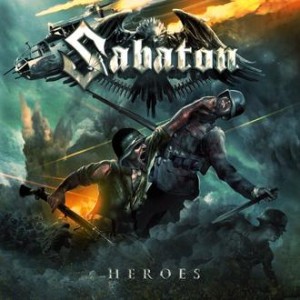 7. Sabaton – Heroes:
7. Sabaton – Heroes:
Some would say this is a homer pick, particularly a pair of goofball friends of mine who enjoy trolling my Sabaton fandom with unrestrained glee (its okay, they go to the band’s shows just the same). But Sabaton are deserving candidates to wind up here, this time not just because Joakim Broden continues to make a case for being the most skillful songwriter in power metal today; but because with Heroes the band did something daringly bold. Here was a case of a band that’s made its legion of fans on triumphant anthems depicting war, battles, destruction, and the might of armies and kings. One of the criticisms they’ve faced in the past is that in writing solely about those topics, they pander to an audience and use patriotism as an advertising agent. I think its a bogus critique, because its proponents are suggesting that Broden has to qualify his lyrics with politically neutral counterpoints, as if somehow his audience will misappropriate a song like “Ghost Division” (his audience hasn’t, but the critics have). Sabaton had the concept for Heroes floating around for awhile apparently, but their timing was well chosen —- they simply had to deliver something different, and it came in the form of their first album largely dedicated to examples of non-violent heroism, where humanity triumphed over warfare.
You’ll see examples of this littered throughout the album: a German fighter pilot escorting a crippled American bomber to safety (“No Bullets Fly”); an Australian medic carrying twelve injured American soldiers down a mountain to safety under withering fire (“The Ballad of Bull”); a Polish hero who willingly became a prisoner of Auschwitz in order to gather evidence of war crimes, and escaped to deliver his report (“Inmate 4859”) —- to name a handful. The thematic success doesn’t detract from the fact that Broden still delivered the goods in the songwriting department. There are your supremely catchy, traditionally structured future Sabaton classics such as “Resist and Bite” and “Soldier of 3 Armies”; and there’s some rather gutsy experimentation in the form of 1940s musical pastiche. The new guitarists Chris Rörland and Thobbe Englund were an unproven, unknown quantity in terms of how well they’d be able to create guitar parts to complement Broden’s keyboard written structures, but their work here is an unmitigated success. Riffs are intense and tightly constructed, their melodies shimmer, and their soloing is vivid and flavorful. I keep wondering Sabaton will ever stumble as I’m sure their critics hope they will, but Heroes works as an argument to suggest they won’t.

8. Grand Magus – Triumph and Power:
This was a recurring listen throughout the year when I wanted something straightforwardly catchy, but more minor key and aggressive than your average power metal release. Sweden’s Grand Magus are not power metal, nor are they folk/viking metal despite their name and imagery —- they’re just metal. Long having abandoned their doomy roots, the band loosely exist in a trad metal palette these days and add in measured amounts of rock n’ roll rattle and shake. Vocalist Janne Christoffersson grabs your attention by virtue of the songs being constructed around his vocal melodies, and with the fact that the quality of his voice is more hard rock baritone than say, air raid siren Bruce Dickinson. The band is also a three piece, so its fairly no-frills, just the meat and potatoes of solid riffs, hummable vocal melodies, and rock-steady percussion.
Album highlight “Steel Versus Steel” is a good gauge of the kind of magic Grand Magus conjure up with a purposeful emphasis on simplicity, the mid-tempo pace set by seemingly swingin’ drums. The chorus is magic, as Christoffersson belts out “And in the end it’s steel versus steel / The final lock and the final key”, the guitars echoing the strutting vocal melody with staccato riffing. It narrowly missed appearing on my Best Songs of 2014 list (too many to list this year). The band gets more adventurous on the title track, where slowly sung verses dramatically build up to a gusher of a chorus, punctuated by a “Hail! Victory!”, its an incredibly fun moment. It gets heavier too, with the punishing “Dominator” which should ring strangely familiar to fans of Glen Cook’s The Black Company series (though I doubt that was on purpose). And I really, really love “The Hammer Will Bite”, not just for its strangely sorrowful sounding intro, but for its monstrously wild and glory-claw inducing chorus where Christoffersson sounds like a Swedish James Hetfield: “The hammer will bite – no other choice than surrender /
Bow to the might – a fiery death from above… Yeaaah!”. One of the few albums I covered this year that can instantly appeal to power and extreme metal fans alike.
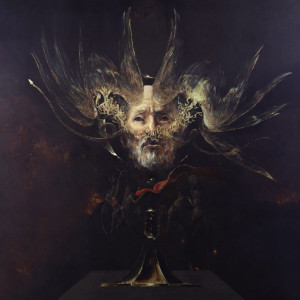 9. Behemoth – The Satanist:
9. Behemoth – The Satanist:
There’s already so much written about this album, and its ended up on so many year end lists that it might seem superfluous to see it yet again, but if you’re one of the few that slept on The Satanist one you really need to get on it. Its not overhyped, and its praise is not exaggerated; but its propensity to thrill you is perhaps entirely dependent on your tolerance for extreme metal. I use that term instead of labeling Behemoth’s sound with more specificity because now more than ever, this is a band that doesn’t fit in anywhere. On The Satanist, the band mixes their take on death metal with a little black metal in the form of a bleaker vocal approach, blast beats, and some quasi-tremolo riffing; finished with a touch of hard rock simplicity to produce a concoction that is brutal, violent, and feverish in its unyielding intensity.
That said, the band has evolved past the need for sheer brutality for brutality’s sake. In its place are atmospheric soundscapes and warm instrumentation, a combination that culminates in this being the most human sounding Behemoth album to date. Its a relief for me, because the tech-y coldness on their past albums was a stumbling block for me in trying to enjoy them —- and not only that, but Nergal simply delivers better songs here. One of his best is the title track, with its blackened, stop-start Metallica-esque riffs and oddly tuneful refrain. Of course there’s the music video famous “Blow Your Trumpets Gabriel”, its guitar patterns reminding me of latter day Enslaved and providing the album’s most hummable riff. My favorite is still “O Father O Satan O Sun!”, whose primary riff and guitar melody are quite indebted to Judas Priest in the best possible way. The multi-tracking of Nergal’s vocals here are an inventive way to make them sound far more otherworldly and terrifying than you’d anticipate, a technique not often seen in extreme metal. I think everyone who’s wanted to hear this album has heard it by now, but power/prog metal fans should let their guard down and give it a few listens, its as ornate and fully arranged as a Blind Guardian album, just using a different palette.
 10. Noble Beast – Noble Beast:
10. Noble Beast – Noble Beast:
There are a handful of nominees that didn’t make the final cut of this list, the last few I was really deliberating over included Dragonforce’s Maximum Overload and Darkenhold’s Castellum —- both deserving in their own spectacular ways. But I just couldn’t ignore Noble Beast, a relatively unknown American band that came out of nowhere with a near perfect album of polished, thunder-heavy power metal with songwriting so developed and accomplished it ranks in my mind as one of the best debut albums in recent memory. Vocalist Rob Jalonen sounds like a symbiosis of Falconer’s Mathias Blad with his smooth baritone and the sandpaper-roughness of Iron Savior’s Piet Sielck —- with a splash of Hansi Kursch added to account for those throat-ripping screams. And if the European-ness of those names is any hint, then I’ll confirm that yes, Noble Beast owe more to their European heroes than they do to other American power metal bands whose lineage lies in thrash metal (your Pharaohs, your Iced Earths, etc).
It takes a supreme grinch to deny the sheer metal joy of the album opener “Iron Clad Angels”, with its arcing, soaring chorus built on Jalonen’s muscular vocal and some truly frenetic guitar work. The martial stomp of “The Dragon Reborn” with its extenuating choir vocal lines and ultra-melodic guitar twists seem like a lost Blind Guardian track, but there’s more than just reminders of other bands flowing throughout these songs. On “Nothing To Repent”, the band marries thrash metal aggression and riffs with some startlingly prog-rock song structures, a combination that works despite its disparity. There’s the arena-rock thunder and lightning of “Peeling Back the Veil”, with a stellar chorus and great Mathias Jabs/Rudolf Schenker styled guitar work and Maiden-esque twin soloing. And I love the inventiveness of throwing in some acoustic strumming in the verses of “We Burn”, creating some playful folky looseness in a song built on slamming riffage. Jalonen does double duty on guitar alongside a fellow named Matt Hodsdon, and together they dip and weave around each other like a power metal Slash and Izzy —- their interplay might be the most underrated aspect of the album. More people need to hear this album, and hopefully there will be a second one.
 Awhile back in August of 2014, I wrote a piece on the continuing delays that surrounded Wintersun’s Time Pt II. It got noticed by a handful of their fans and linked on the band’s Facebook page where it made quite a stir (even eliciting a few disapproving comments from Jari Mäenpää himself). My main criticism in that piece was his attempt to deploy crowdfunding to circumvent his deal with Nuclear Blast who according to Mäenpää weren’t helping him achieve his artistic vision with adequate resources. Nuclear Blast had responded and the result was an ugly fight in the metal press, one that saw many people even outside of the Wintersun fandom taking sides. While I did side with Nuclear Blast to a certain extent, I think the source of my frustration was that I also considered myself a fan of the guy. The band’s 2004 self-titled debut was (and still is) an electric mix of speedy Swedish melo-death infused with Finnish power metal’s major key melodicism, christened with Yngwie-like guitar and keyboard theatrics that made the whole thing crackle with intensity. That album was only a couple months removed from another 2004 Mäenpää classic in Ensiferum’s Iron, the second of two incredible, pioneering albums he made with that band before leaving to pursue Wintersun full time that same year. In a span of just three years and change (’01-’04), Mäenpää had delivered three bonafide classics, exciting albums that made us rethink where metal could go and how it could sound. He seemed poised to among metal’s most admired prolific voices, like Therion’s Christofer Johnsson and Opeth’s Mikael Akerfeldt before him, a guy who would knock out a flurry of awesome works in rapid succession over a decade. Instead, we wouldn’t hear anything new from him until 2012.
Awhile back in August of 2014, I wrote a piece on the continuing delays that surrounded Wintersun’s Time Pt II. It got noticed by a handful of their fans and linked on the band’s Facebook page where it made quite a stir (even eliciting a few disapproving comments from Jari Mäenpää himself). My main criticism in that piece was his attempt to deploy crowdfunding to circumvent his deal with Nuclear Blast who according to Mäenpää weren’t helping him achieve his artistic vision with adequate resources. Nuclear Blast had responded and the result was an ugly fight in the metal press, one that saw many people even outside of the Wintersun fandom taking sides. While I did side with Nuclear Blast to a certain extent, I think the source of my frustration was that I also considered myself a fan of the guy. The band’s 2004 self-titled debut was (and still is) an electric mix of speedy Swedish melo-death infused with Finnish power metal’s major key melodicism, christened with Yngwie-like guitar and keyboard theatrics that made the whole thing crackle with intensity. That album was only a couple months removed from another 2004 Mäenpää classic in Ensiferum’s Iron, the second of two incredible, pioneering albums he made with that band before leaving to pursue Wintersun full time that same year. In a span of just three years and change (’01-’04), Mäenpää had delivered three bonafide classics, exciting albums that made us rethink where metal could go and how it could sound. He seemed poised to among metal’s most admired prolific voices, like Therion’s Christofer Johnsson and Opeth’s Mikael Akerfeldt before him, a guy who would knock out a flurry of awesome works in rapid succession over a decade. Instead, we wouldn’t hear anything new from him until 2012. The resulting Indie-Go-Go crowdfunding campaign ran all of this past March. Instead of offering the usual run of merch n’ perks that most bands put up in exchange for donations, the only donation option was for “The Forest Package”, which was essentially the band’s new album The Forest Seasons, its instrumental twin plus a remastered version of Time I (and its instrumental version), as well as the remaster of the debut album along with the Live at Tuska 2013 live album. When this news went out I actually thought that it was a smart move, to just simply offer the die hard Wintersun fan a pre-order of the new album (essentially) plus a host of other Wintersun music that you could get a tidy amount for per person. It wouldn’t appeal to a casual fan like myself, and as a result I suspect many of us scoffed at the band’s overall stated goal of 750,000 Euros (a goal to be reached in chunks —- this being the first of three crowdfunding campaigns), but the band has gotten the last laugh as they netted € 428,310 in just March alone, more than halfway towards their goal. Kudos to them, seriously. I’m not against crowdfunding in metal, I think that its a valid way to go if a band can pull it off. With Mäenpää, the frustration was that he had started clamoring for a crowdfunding attempt after making his fans wait a decade, not to forget the numerous delays and social media posts that grated on everyone’s patience. Its a testament to the man’s music that so many didn’t hold that against him in March.
The resulting Indie-Go-Go crowdfunding campaign ran all of this past March. Instead of offering the usual run of merch n’ perks that most bands put up in exchange for donations, the only donation option was for “The Forest Package”, which was essentially the band’s new album The Forest Seasons, its instrumental twin plus a remastered version of Time I (and its instrumental version), as well as the remaster of the debut album along with the Live at Tuska 2013 live album. When this news went out I actually thought that it was a smart move, to just simply offer the die hard Wintersun fan a pre-order of the new album (essentially) plus a host of other Wintersun music that you could get a tidy amount for per person. It wouldn’t appeal to a casual fan like myself, and as a result I suspect many of us scoffed at the band’s overall stated goal of 750,000 Euros (a goal to be reached in chunks —- this being the first of three crowdfunding campaigns), but the band has gotten the last laugh as they netted € 428,310 in just March alone, more than halfway towards their goal. Kudos to them, seriously. I’m not against crowdfunding in metal, I think that its a valid way to go if a band can pull it off. With Mäenpää, the frustration was that he had started clamoring for a crowdfunding attempt after making his fans wait a decade, not to forget the numerous delays and social media posts that grated on everyone’s patience. Its a testament to the man’s music that so many didn’t hold that against him in March.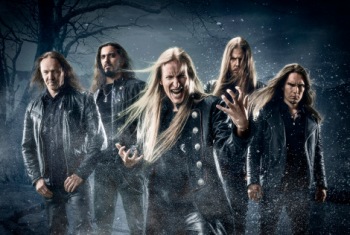 Riding such a high from the sounds of spring and summer, its a bit of a bummer that I couldn’t find as much enthusiasm for “Eternal Darkness (Autumn)”, and “Loneliness (Winter)”. You’d figure with the band’s name being Wintersun that these would be home runs, and while they’re not bad by any stretch of the imagination, they don’t inspire the same awe and grandeur of their more flowery siblings. With autumn we get the band’s most blistering attack ever, its furious black metal assault nearly running the gamut of the track’s fourteen minute run time. There are breaks here and there, the song being broken up into “parts”, transitioned by more breathable musical interludes. This piece instantly reminded me of fellow Finns Insomnium and their Winter’s Gate album, both in tonality and sheer aggression —- great for depicting the brutality of winter, which is what made Insomnium’s album so convincing, but I’m not so sure it was the wisest choice for the autumn sequence. The suite’s second half is so reminiscent of Dimmu Borgir riff sequences (complete with Tim Burton-esque orchestrations and Shagrath-like vocals) that I wonder if they weren’t a direct inspiration. Its a trying piece, one that is unforgiving in its attack and devoid of the Wintersun melodicism we all came for, and I just don’t think it succeeds on any level.
Riding such a high from the sounds of spring and summer, its a bit of a bummer that I couldn’t find as much enthusiasm for “Eternal Darkness (Autumn)”, and “Loneliness (Winter)”. You’d figure with the band’s name being Wintersun that these would be home runs, and while they’re not bad by any stretch of the imagination, they don’t inspire the same awe and grandeur of their more flowery siblings. With autumn we get the band’s most blistering attack ever, its furious black metal assault nearly running the gamut of the track’s fourteen minute run time. There are breaks here and there, the song being broken up into “parts”, transitioned by more breathable musical interludes. This piece instantly reminded me of fellow Finns Insomnium and their Winter’s Gate album, both in tonality and sheer aggression —- great for depicting the brutality of winter, which is what made Insomnium’s album so convincing, but I’m not so sure it was the wisest choice for the autumn sequence. The suite’s second half is so reminiscent of Dimmu Borgir riff sequences (complete with Tim Burton-esque orchestrations and Shagrath-like vocals) that I wonder if they weren’t a direct inspiration. Its a trying piece, one that is unforgiving in its attack and devoid of the Wintersun melodicism we all came for, and I just don’t think it succeeds on any level.
 The bounty of spring indeed, because this month I’ve found myself going through at least eight new releases, a few of which aren’t listed in the reviews below but might be up later sometime. Some of these are also late February releases that I had overlooked that month or simply thought were coming out in March (or more accurately, I didn’t get around to listening to until recently). There’s a lot to get to and I’ve tried to keep things short and concise for you and me both, so we’ll apply that to this preamble too. Begin!
The bounty of spring indeed, because this month I’ve found myself going through at least eight new releases, a few of which aren’t listed in the reviews below but might be up later sometime. Some of these are also late February releases that I had overlooked that month or simply thought were coming out in March (or more accurately, I didn’t get around to listening to until recently). There’s a lot to get to and I’ve tried to keep things short and concise for you and me both, so we’ll apply that to this preamble too. Begin!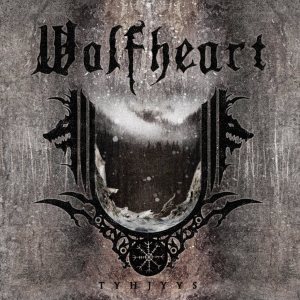 Wolfheart – Tyhjyys:
Wolfheart – Tyhjyys: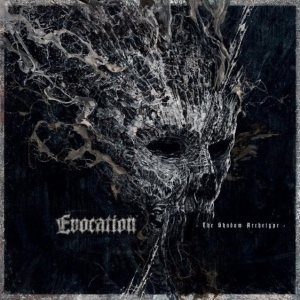 Evocation – The Shadow Archetype:
Evocation – The Shadow Archetype: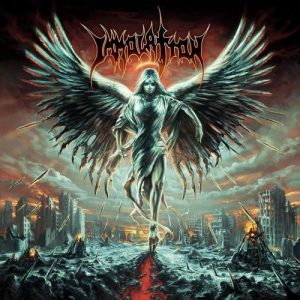 Immolation – Atonement:
Immolation – Atonement: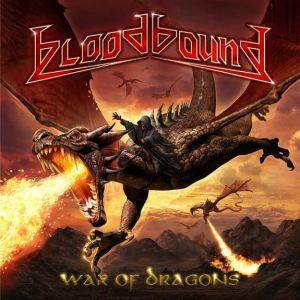 Bloodbound – War of Dragons:
Bloodbound – War of Dragons: Mors Principium Est – Embers of a Dying World:
Mors Principium Est – Embers of a Dying World:
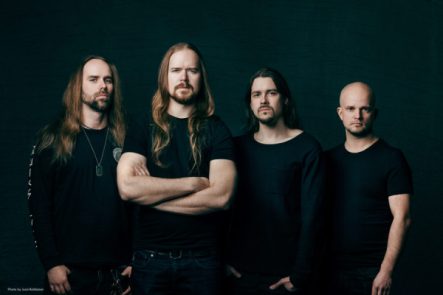


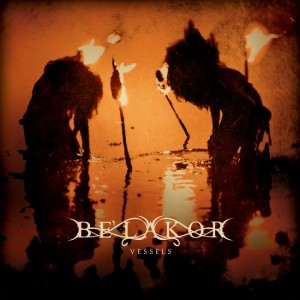


 Myrath – Legacy: Tunisia’s greatest (and perhaps only) metal export Myrath return with their first new album in five years with Legacy, one of my most anticipated albums of the year. I was sold on this band with 2011’s Tales of the Sands, an album that was largely spectacular, the sound of a band that had found their distinctive style and the songwriting chops to match. Well, five years is an eternity in metal, and Myrath seem to have spent the time wisely because Legacy is a truly inspired breath of fresh air that is pushing the boundaries of what oriental metal can sound like. If you’re unfamiliar with the band, they play a blend of prog-metal with minor-scaled Arabic melodies and motifs built around the inclusion of instruments such as violins, violas, the lute, and the ney. In that sense they’re similar to Orphaned Land, except that their Israeli counterparts began as a death metal band and have gradually expanded their sound away from that as their vocalist Kobi Farhi has developed his clean singing voice. Myrath meanwhile have been all about clean delivery from the very start, even predating the arrival of their uniquely talented longtime and current singer Zaher Zorgati, whose innate abilities at channeling traditional Arabic vocals alongside his Russell Allen-esque pipes makes him one of the most unique vocalists in metal.
Myrath – Legacy: Tunisia’s greatest (and perhaps only) metal export Myrath return with their first new album in five years with Legacy, one of my most anticipated albums of the year. I was sold on this band with 2011’s Tales of the Sands, an album that was largely spectacular, the sound of a band that had found their distinctive style and the songwriting chops to match. Well, five years is an eternity in metal, and Myrath seem to have spent the time wisely because Legacy is a truly inspired breath of fresh air that is pushing the boundaries of what oriental metal can sound like. If you’re unfamiliar with the band, they play a blend of prog-metal with minor-scaled Arabic melodies and motifs built around the inclusion of instruments such as violins, violas, the lute, and the ney. In that sense they’re similar to Orphaned Land, except that their Israeli counterparts began as a death metal band and have gradually expanded their sound away from that as their vocalist Kobi Farhi has developed his clean singing voice. Myrath meanwhile have been all about clean delivery from the very start, even predating the arrival of their uniquely talented longtime and current singer Zaher Zorgati, whose innate abilities at channeling traditional Arabic vocals alongside his Russell Allen-esque pipes makes him one of the most unique vocalists in metal.

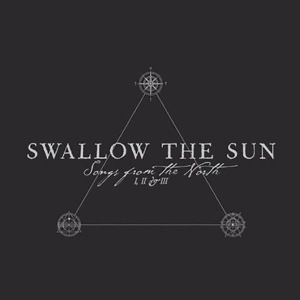
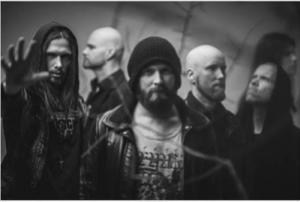
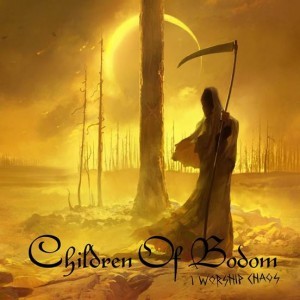

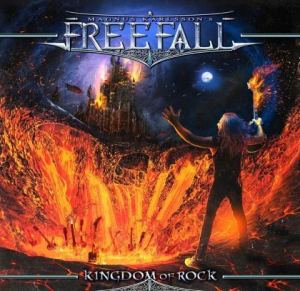




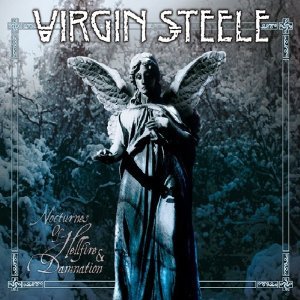



 Subterranean Masquerade – The Great Bazaar:
Subterranean Masquerade – The Great Bazaar: Kiske/Somerville – City of Heroes:
Kiske/Somerville – City of Heroes:  Thurisaz – The Pulse of Mourning:
Thurisaz – The Pulse of Mourning: Jorn Lande & Trond Holter – Dracula: Swing of Death:
Jorn Lande & Trond Holter – Dracula: Swing of Death: Monox – Perception Changes:
Monox – Perception Changes: Melechesh – Enki:
Melechesh – Enki:

 2. Ghost Brigade – IV – One With the Storm:
2. Ghost Brigade – IV – One With the Storm: 3. Dawn of Destiny – F.E.A.R.:
3. Dawn of Destiny – F.E.A.R.:

 6. Primordial – Where Greater Men Have Fallen:
6. Primordial – Where Greater Men Have Fallen: 7. Sabaton – Heroes:
7. Sabaton – Heroes:
 9. Behemoth – The Satanist:
9. Behemoth – The Satanist: 10. Noble Beast – Noble Beast:
10. Noble Beast – Noble Beast:
 At The Gates – At War With Reality: I suppose back story isn’t really needed here, I mean you’re all smart, together, with-it metal fans that already know this is At The Gates first new music in nineteen years. I’ll admit that for the longest time after their initial reunion began in 2006 I never anticipated anything new in the way of a studio album from them. I saw them live in 2008 and they looked pretty comfortable doing the classics and I figured that would be it, Emperor-style reunion touring for us newer generation of metal fans that never saw them in their initial incarnation, healthy profits, and satisfaction all around. The At The Gates legacy didn’t have the same problem that Carcass did with theirs —- Slaughter of the Soul was a watershed classic, Swansong was anything but. It was understandable that Carcass would want to try their hand at crafting an album far more worthy of closing their discography upon, and the resulting Surgical Steel was so utterly fantastic, it should be considered the modern day reunion album benchmark (it is by me). So it comes as something of a gamble that At The Gates have chosen to follow up Slaughter of the Soul with At War With Reality, and I’ve seen plenty of other reviewers assert that the band’s greatest strength is in not caring what others make of their legacy at all. Okay, that’s fair —- but then again the band themselves would never have a hand in “defining” it to begin with, that’s our job as fans.
At The Gates – At War With Reality: I suppose back story isn’t really needed here, I mean you’re all smart, together, with-it metal fans that already know this is At The Gates first new music in nineteen years. I’ll admit that for the longest time after their initial reunion began in 2006 I never anticipated anything new in the way of a studio album from them. I saw them live in 2008 and they looked pretty comfortable doing the classics and I figured that would be it, Emperor-style reunion touring for us newer generation of metal fans that never saw them in their initial incarnation, healthy profits, and satisfaction all around. The At The Gates legacy didn’t have the same problem that Carcass did with theirs —- Slaughter of the Soul was a watershed classic, Swansong was anything but. It was understandable that Carcass would want to try their hand at crafting an album far more worthy of closing their discography upon, and the resulting Surgical Steel was so utterly fantastic, it should be considered the modern day reunion album benchmark (it is by me). So it comes as something of a gamble that At The Gates have chosen to follow up Slaughter of the Soul with At War With Reality, and I’ve seen plenty of other reviewers assert that the band’s greatest strength is in not caring what others make of their legacy at all. Okay, that’s fair —- but then again the band themselves would never have a hand in “defining” it to begin with, that’s our job as fans. While Heaven Wept – Suspended At Aphelion: First of all, While Heaven Wept’s newest album scores the award for best cover art of the year hands down, take a long gander at that sleeve in high res on Google Images… its just flat out jaw dropping. Secondly, I’ve been waiting for this album with a great amount of anticipation, having been sold on them a year or two ago with the song “Vessel” from their 2009 album Vast Oceans Lachrymose. I didn’t find its follow up album, Fear of Infinity nearly as compelling, but they’ve managed to win the benefit of the doubt in my mind. If you’re unfamiliar, this prog-meets-power-meets-doom metal band from Virginia of all places is keen on grand, epic scale music with lyrical themes (and artwork) to match. I expect that there might be a few metal fans out there who take umbrage with While Heaven Wept’s manner of tracklisting, sequencing, and envisioning of albums in general. There are usually not many actual tracks, two songs are often paired up and folded into one long song, there are short instrumentals including intro and outro tracks, and the overall album length is sometimes maddeningly short (forty minutes here, ten of which are instrumental). I’ll admit that its slightly frustrating for me as well, but the band clearly intends for their albums to be listened to from start to finish, and in truth they work better that way (this is prog-metal after all).
While Heaven Wept – Suspended At Aphelion: First of all, While Heaven Wept’s newest album scores the award for best cover art of the year hands down, take a long gander at that sleeve in high res on Google Images… its just flat out jaw dropping. Secondly, I’ve been waiting for this album with a great amount of anticipation, having been sold on them a year or two ago with the song “Vessel” from their 2009 album Vast Oceans Lachrymose. I didn’t find its follow up album, Fear of Infinity nearly as compelling, but they’ve managed to win the benefit of the doubt in my mind. If you’re unfamiliar, this prog-meets-power-meets-doom metal band from Virginia of all places is keen on grand, epic scale music with lyrical themes (and artwork) to match. I expect that there might be a few metal fans out there who take umbrage with While Heaven Wept’s manner of tracklisting, sequencing, and envisioning of albums in general. There are usually not many actual tracks, two songs are often paired up and folded into one long song, there are short instrumentals including intro and outro tracks, and the overall album length is sometimes maddeningly short (forty minutes here, ten of which are instrumental). I’ll admit that its slightly frustrating for me as well, but the band clearly intends for their albums to be listened to from start to finish, and in truth they work better that way (this is prog-metal after all). Sanctuary – The Year The Sun Died: You’d be forgiven for glancing back at the album art when experiencing your initial few minutes of Sanctuary’s first new album in twenty-five years. It sounds an awful lot like a theoretical new Nevermore album than anything resembling the power metal infused thrash of the Sanctuary’s pair of late eighties albums. What makes it strange is that original guitarist Lenny Rutledge is back in the fold and handled most of the songwriting, and yet there is an overall Jeff Loomis vibe to the guitar work that is hard to ignore. I’ve considered the possibility that my brain is playing tricks on me, that Warrel Dane’s vocals being mixed far up front (similar to Nevermore), and the overall modern production of the album is subliminally suggesting a likeness that isn’t really there. I’m not going to harp on this though, but suffice to say, it was difficult at times to wrap my head around the reality that this is indeed a Sanctuary album.
Sanctuary – The Year The Sun Died: You’d be forgiven for glancing back at the album art when experiencing your initial few minutes of Sanctuary’s first new album in twenty-five years. It sounds an awful lot like a theoretical new Nevermore album than anything resembling the power metal infused thrash of the Sanctuary’s pair of late eighties albums. What makes it strange is that original guitarist Lenny Rutledge is back in the fold and handled most of the songwriting, and yet there is an overall Jeff Loomis vibe to the guitar work that is hard to ignore. I’ve considered the possibility that my brain is playing tricks on me, that Warrel Dane’s vocals being mixed far up front (similar to Nevermore), and the overall modern production of the album is subliminally suggesting a likeness that isn’t really there. I’m not going to harp on this though, but suffice to say, it was difficult at times to wrap my head around the reality that this is indeed a Sanctuary album.